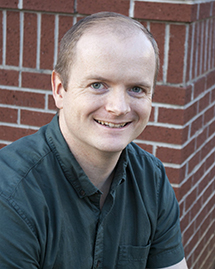Seminars
Dr. Ian Greenquist
Nuclear Energy and Fuel Cycle Division
Oak Ridge National Laboratory
A Grand Potential Sintering Model: Derivation and Application to UO2 Thermal Sintering, Doped Sintering, and Irradiation-Enhanced Densification

ABSTRACT: UO2 fuel properties such as the temperature profile, fracture, fission gas release, and volumetric changes are partially determined by the fuel microstructure. The initial fuel microstructure is created during the sintering process used to manufacture the UO2 fuel pellets. A mechanistic microstructural model of sintering can help predict the initial fuel microstructure for various sintering conditions and predict additional densification that occurs during reactor operation.
This work describes the formulation of a grand potential sintering model, the model’s verification, and comparisons to existing UO2 experimental data. The model improved upon existing microstructural models by relying more on the thermodynamic and kinetic driving forces of sintering and less on fitting parameters.
Once the model was developed, it was used to gain additional insight into two additional forms of UO2 microstructure evolution: doped sintering and irradiation-enhanced densification. Doped sintering is a manufacturing method where chemical dopants are used to increase the density and grain size of sintered UO2. The grand potential model was used to verify a proposed mechanism for the impact of dopants in UO2 and compare the density change and grain size to experimental data. Irradiation-enhanced densification is a form of sintering that occurs during the early stages of the fuel lifetime inside the reactor. The model was modified to include irradiation-enhanced densification mechanisms, making it a first-of-kind microstructural densification model. It was then used in several small simulations to gain additional insight into the bulk behavior of densification.
BIOGRAPHY: Dr. Greenquist earned his BS in Chemical Engineering from Brigham Young University in 2015. He earned his PhD in Nuclear Engineering from Penn State University in 2019. He joined Oak Ridge in 2019 as a Postdoctoral Research Associate and was converted to full-time staff in 2021. In his current role, he performs BISON simulations of metallic fuels to support the Versatile Test Reactor Project. His research interests include computational models, phase field models, fuel performance models, and various fuel types including UO2, metallic fuels, and TRISO. In his spare time Ian rides his bike, hikes, and spends time with his wife and three daughters.